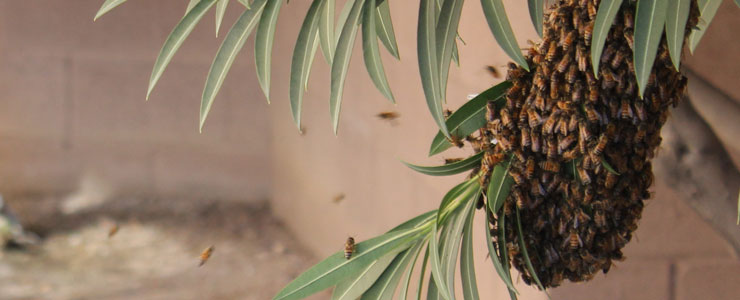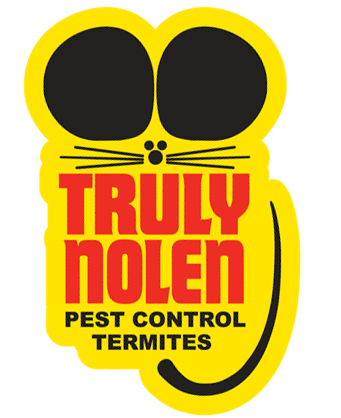
Most feral bee colonies in the southern United States are of the Africanized variety. Eradication of a bee colony is recommended for several reasons:
- This variety serves no useful purpose.
- This variety poses a danger to humans and animals.
- A bee colony inside a structure will inevitably cause damage.
The INSPECTION process begins with a customer interview, followed by a thorough visual inspection for pest IDENTIFICATION and DETERMINATION of a course of action. Because bees pose a danger, the pest professional does not ask the customer to accompany him during the inspection phase.
Safety
The pest professional puts on his bee suit and secures the area based on the location and sting potential to passersby. It is advisable to evacuate those in this commercial space during the course of the treatment and even in adjacent portions of the structure (like an adjacent suite) if it is possible that the bees will exit into other areas once the treatment protocol has begun.
Treatment
Material is applied to the established bee hive to eliminate the infestation.
- Knockdown hive outside an enclosed area. Using soapy water (1 cup per gallon – Dawn dishwashing liquid preferred) in a power sprayer or back pack sprayer, the tech quickly coats the exterior of the hive. He continues to spray to knock down the bees on the outside of the hive and others as they exit the hive. The process continues until the bees are eradicated and the buzzing stops.
- Knockdown hive inside an enclosed area or wall void. The technician locates the approximate location and expanse of the hive by listening for buzzing inside the wall and/or determining where bees are going in and out of the structure. He drills one or more pilot holes in the immediate area of hive, and then immediately forces Nibor D into the void, preferably using an electric duster, or treats with 565 or P.I. with a 36″ extension tube. The technician now plugs the hole and lets the material take affect. He hangs a bee pheromone glueboard to catch any stragglers. This process could take several hours.
Bee and Hive Removal
The infested cavity is now opened in order to remove the comb & dead bees. All debris is bagged for off-site disposal.
Repairs
If the hive was inside an enclosed area, then the cavity must now be closed up using the original materials removed for access. If original materials are unusable to close the cavity, then it is covered with a temporary barrier. This service does not include repairs, painting, or any exclusion/sealing work.
Clean-up
Reasonable area clean-up is included.
COMMUNICATION Even though this work was subcontracted out to a bee expert, the Truly Nolen pest control professional understands the importance of communication with his customer.
- Once the job is completed, he discusses with the customer, either in person or by phone, the treatment activities imposed. The professional also lets the customer know that some straggler bees may return to the site over the next 48 hours, but they will eventually die or leave this location. He lets the customer know that the work performed is guaranteed for thirty days.
- The inspector also quality controls the work done to make sure that the customer is completely satisfied.
- The Truly Nolen inspector realizes that this customer has experienced the cost and inconvenience of a bee hive and would greatly benefit from monitoring coverage. He approaches the customer immediately after the bee work is done to discuss the Truly Nolen bee monitoring program that best suits this commercial customer’s needs.
Monitoring Coverage
For smaller commercial properties – Scout Trap Placement & Monitoring Program
A non-toxic pheromone based trap is placed on the property (one trap per 2,000 square feet of structure). It attracts and traps scout bees so that they cannot mark the site, return to the swarm and then lead them to this location. The scout trap is monitored quarterly.
Guarantee: If a bee hive appears on a property that has a scout trap, it is covered under the quarterly service plan at no additional cost.
A twelve month agreement is required, with a discount available when purchased with an existing or new reoccurring commercial pest control agreement.
For larger properties – Swarm Trap Placement & Monitoring Program
For larger properties, like apartment complexes and golf courses. A set of pheromone based bucket-type units attracts the swarm into a vessel. The bucket acts as the perfect location for a new hive and an ideal containment system so that the infestation can be effectively exterminated. A twelve month agreement is required, with a discount available when purchased with existing or new reoccurring commercial pest control agreement.
